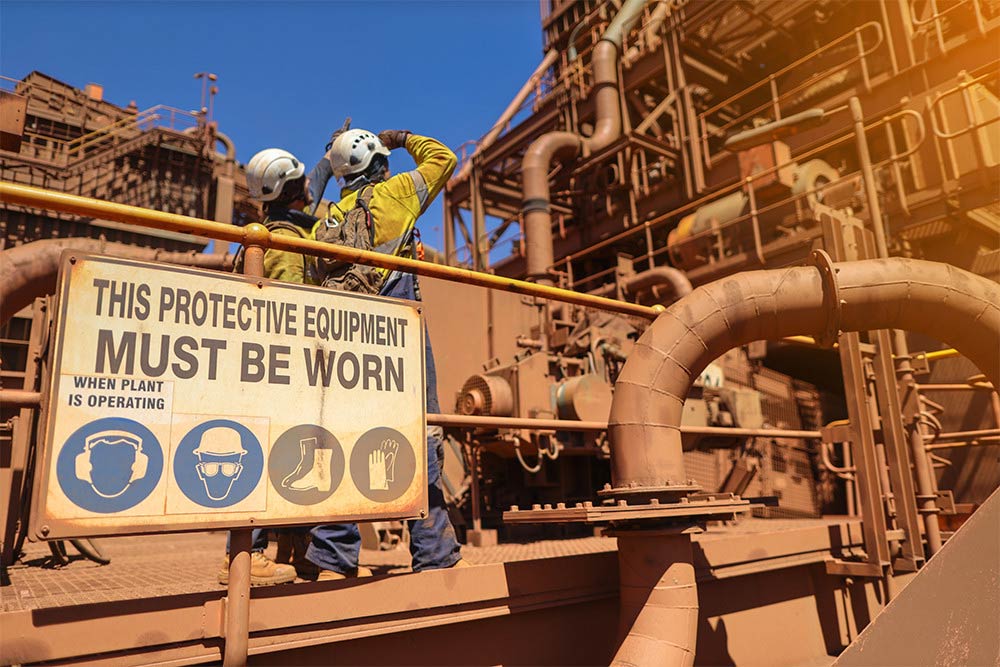
ISO 14001 is an internationally recognised standard for environmental management systems.
Unlike legal requirements, ISO 14001 compliance is voluntary. Businesses can choose to align their environmental management systems with it or not. But there are clear business benefits for organisations that do implement the standard.
This guide explains the ISO 14001 standard, how it supports environmental and business goals, and what you need to know about implementation and certification.
Key Takeaways
- ISO 14001 is an international standard that provides businesses with a structured framework for effective environmental management.
- The standard was developed by the International Organization for Standardization (ISO), a globally recognised body that sets standards covering nearly every aspect of business operations.
- Implementing ISO 14001 involves assessing environmental impact, setting objectives, establishing operational controls, and monitoring progress.
- ISO 14001 certification is optional, but many organisations seek it to demonstrate commitment to environmental management and gain a competitive advantage.
What is ISO 14001?
ISO 14001 is a standard for environmental management systems, developed by the International Organization for Standardization (ISO).
ISO is a globally recognised body that establishes standards to ensure consistency, performance, and safety across industries. These standards cover diverse business areas, including quality assurance (ISO 9001), occupational health and safety (ISO 45001), and information security (ISO 27001).
ISO 14001 provides a structured framework to help businesses manage their environmental performance. It promotes waste reduction, better resource efficiency, and compliance with environmental regulations.
The standard follows the Plan-Do-Check-Act (PDCA) cycle, which starts with objective setting, followed by implementing changes, monitoring progress, and then making adjustments based on the outcomes.
Unlike legislation, ISO 14001 doesn’t impose specific environmental targets. Instead, it requires a demonstrable, ongoing improvement in environmental performance (which is why the PDCA cycle is central to the standard).
ISO 14001 applies to any size business in any sector. Whatever your organisation, the standard should provide a framework for integrating sustainability into daily operations.
What’s the Difference Between ISO 14001 and ISO 45001?
ISO 14001 and ISO 45001 are both management system standards, but they focus on different areas.
- ISO 14001 covers environmental management. It provides a framework for reducing environmental impact and improving sustainability.
- ISO 45001 covers occupational health and safety. It provides a framework for managing workplace risks and protecting employee well-being.
Both follow a similar structure to make it easier to implement them together as part of an integrated management system.
What is an Environmental Management System?
An environmental management system (EMS) describes the procedures, policies, and controls put in place to manage an organisation’s environmental performance.
An ISO 14001 environmental management system is developed under the ISO 14001 framework.
While any EMS aims to manage environmental performance, one aligned with ISO 14001 is typically more robust, as it follows a proven structure.
An effective EMS under ISO 14001 typically includes:
- Environmental Policy – A formal commitment to improving environmental impact.
- Risk Assessment – Identifying environmental risks, such as waste production, emissions, or resource consumption.
- Objectives and Targets – Setting measurable environmental goals, like reducing energy use or improving waste management.
- Operational Controls – Implementing procedures to minimise environmental impact and ensure compliance.
- Monitoring and Improvement – Regularly reviewing performance and making improvements.
What are the Benefits of an ISO 14001 Environmental Management System?
Implementing ISO 14001 helps organisations improve environmental performance, which delivers a suite of business advantages. Key benefits include:
- Regulatory Compliance – Meeting environmental laws and regulations to reduce the risk of fines or legal action.
- Cost Savings – Cutting waste, reducing energy consumption, and improving resource efficiency to lower operational costs.
- Reputation and Market Access – Demonstrating a commitment to sustainability, which can improve reputation and make it easier to win business with environmentally conscious customers and clients.
- Risk Management – Identifying and mitigating environmental risks, such as pollution, inefficient resource use, or non-compliance with regulations.
- Employee Engagement – Making environmental responsibility part of everyday operations.
How Do You Implement ISO 14001?
Implementation varies slightly between organisations, but the process always involves these key steps:
- Assess Your Current Environmental Impact – Identify how your organisation interacts with the environment, including energy use, emissions, waste, and resource consumption.
- Define Your Environmental Policy – Establish a formal commitment to environmental management, outlining objectives and legal obligations.
- Set Measurable Objectives – Develop clear environmental goals, such as reducing waste, improving energy efficiency, or cutting emissions.
- Implement Operational Controls – Introduce procedures to manage environmental risks, such as waste management systems, energy-saving measures, or pollution prevention strategies.
- Monitor and Evaluate Performance – Track environmental metrics, conduct internal audits, and review progress to ensure continuous improvement.
- Prepare for Certification (if applicable) – ISO 14001 certification is optional. If you choose to seek it, you must ensure documentation is in place and conduct a formal review before an external audit.
ISO 14001 Clauses
Before a business can confirm that its environmental management system meets ISO 14001, it must conduct a formal review against the standard’s clauses. These clauses outline the essential elements of an ISO 14001-compliant system and ensure continuous improvement.
The first three clauses aren’t part of an audit, so you’ll only need to act against the following:
- Context of the Organisation (Clause 4) – Identifying internal and external factors that affect environmental performance, including legal requirements and stakeholder expectations.
- Leadership (Clause 5) – Requiring top management to take responsibility for environmental performance and integrate it into business strategy.
- Planning (Clause 6) – Covering environmental risks and opportunities, compliance obligations, and setting objectives for improvement.
- Support (Clause 7) – Ensuring the organisation has the necessary resources, training, and communication processes to maintain an effective EMS.
- Operation (Clause 8) – Outlining how to implement and control processes to manage environmental risks, such as waste management or energy efficiency measures.
- Performance Evaluation (Clause 9) – Requiring systems to monitor, measure, and evaluate environmental performance, including conducting internal audits.
- Improvement (Clause 10) – Enabling ongoing improvement by identifying weaker areas of your EMS and taking corrective actions as needed.
How Do You Achieve ISO 14001 Certification?
Certification is a formal recognition that your organisation’s environmental management system meets the standard’s requirements.
It’s entirely optional – businesses can implement the standard without seeking certification.
However, many organisations choose certification because it proves to stakeholders that environmental performance is carefully considered and closely monitored. This evidence can be a competitive advantage when tendering or bidding for contracts with clients that value sustainability.
The certification process involves several key steps:
- Gap Analysis – Assess existing environmental management practices against the standard to identify areas for improvement.
- Implement and Document Changes – Address any gaps by refining policies, improving procedures, and ensuring all EMS processes are properly documented.
- Internal Audit – Conduct an internal review to verify compliance and identify potential non-conformities before the formal certification audit.
- Certification Audit (Stage 1) – An external auditor reviews documentation and initial implementation to confirm the organisation is ready for full assessment.
- Certification Audit (Stage 2) – The auditor conducts a detailed evaluation of the EMS in practice to ensure compliance with the auditable clauses.
- Ongoing Surveillance Audits – If certification is granted, periodic external audits are required to ensure continued compliance and ongoing improvement.
ISO Implementation Training
Implementing ISO 14001 requires careful planning, clear objectives, and ongoing monitoring. Without the right approach, businesses risk inefficiencies, compliance gaps, or systems that fail to deliver real improvements.
The ISO 14001 Implementation Training course provides a structured, step-by-step guide to developing an EMS aligned with ISO 14001:2015. Approved by IIRSM, the course covers:
- Core principles of the standard and how they apply to business operations
- Assessing environmental risks and identifying opportunities for improvement
- Setting realistic EMS objectives that drive efficiency and sustainability
- Integrating operational controls to ensure compliance and performance tracking
- Establishing a framework for continuous improvement
The course consists of six modules that break down each stage of implementation, from initial planning to long-term monitoring.
Whether your business is working towards certification or simply improving environmental performance, this course provides the practical knowledge needed to build a strong EMS.






















